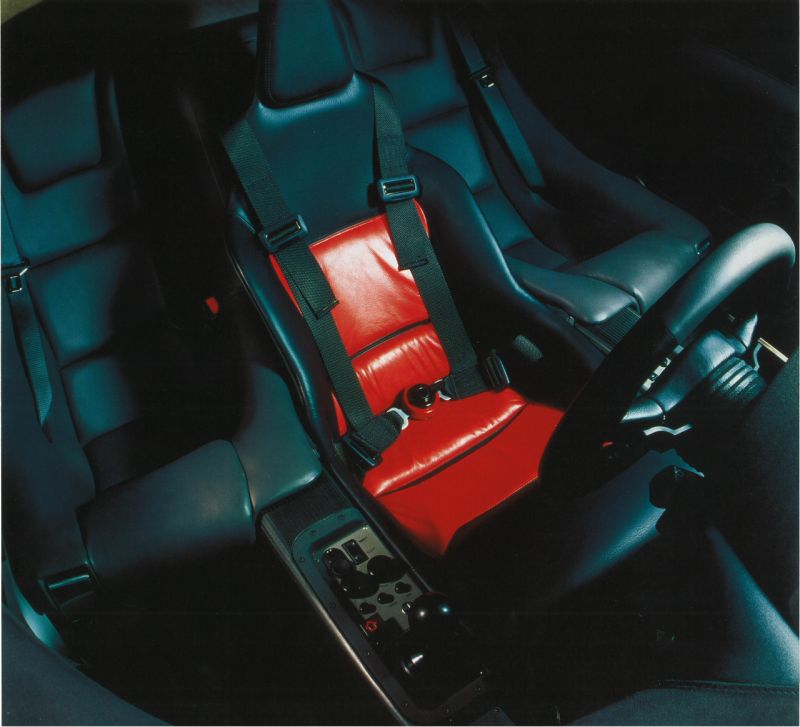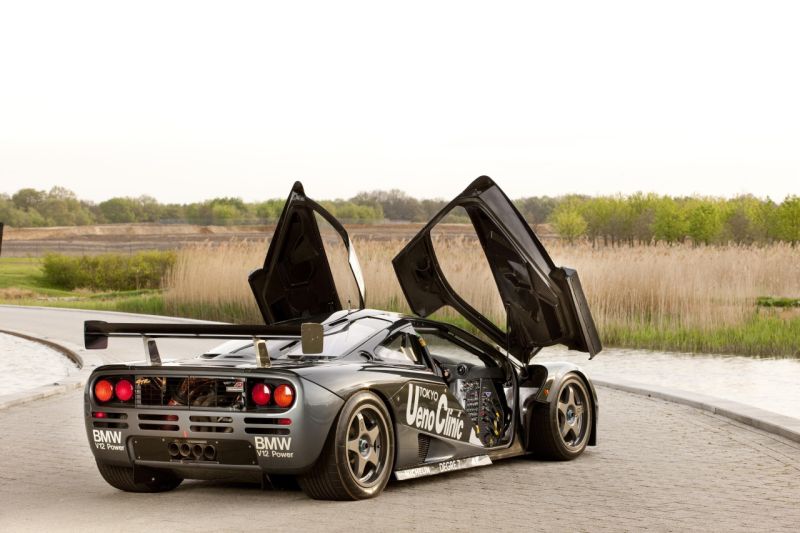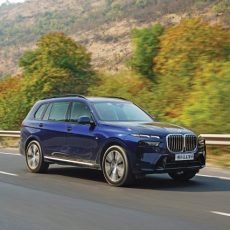We take a look at the story behind probably the greatest supercar ever made. A car that redefined our opinion of speed. The legendary McLaren F1.
The year is 1988. McLaren are dominating Formula 1 with their MP4/4 race car being driven by two legendary Formula 1 drivers, Alain Prost (four-time world driver champion 1985, 1986, 1989, 1993) and Ayrton Senna (three-time world driver champion 1988, 1990, 1991) finishing the season with 15 wins among the two drivers, out of a total 16 races, with Senna taking the crown. McLaren decided that they should take this success and build the finest road car in the world – a decision that would create history, and our take on automotive speed. To develop the car, the team looked at the MP4/4 race car and its carbon-fibre chassis for inspiration; one that was designed and built without compromise. Taking their learnings from Formula 1, the team had sewn the idea of the ‘ultimate road car’ and gave it its name: the ‘F1’, with the car’s design team being headed by Gordon Murray, the very man responsible for the Brabham and McLaren F1 cars.
McLaren, at the time, were being supplied their F1 engines by Honda, and they were the very first candidate shortlisted to make the engine that would go into their road car. Gordon Murray wanted Honda to make a 4.5-litre V10 or V12 for the F1, but Honda declined. Murray insisted that the car be naturally-aspirated and not employ turbochargers or superchargers to up the power, he wanted the engine to develop 550 PS and weigh 250 kg. The BMW Motorsport division took up this challenge and developed a bespoke, hand-built engine: the BMW S70/2 – a 6.1-litre V12, developing more power than what Murray initially asked for, while only being slightly heavier. An engine producing 627 bhp (636 PS) and weighing just 266 kg.

Prior to the sale of the very first McLaren F1, there were five running prototypes that were making their way around, codenamed the XP1 through XP5. The XP1 was the first running prototype, never publicly unveiled. It was never painted either, sporting a bare carbon-fibre exterior. Unfortunately, it was destroyed in an accident in Namibia. The XP2 was used for crash-testing and also suffered the same fate as the XP1. The XP3 was utilised for durability testing, and is still in Murray’s possession. The XP4 tested the gearbox and was later sold to a private owner. The XP5 was the publicity car and also the car used in the famous record top-speed run; more on that later. The car that was first showcased in the public unveil at Monaco in 1992 was a ‘Clinic Model’. It was aesthetically the same as the production model, but lacked an engine.
Once the first model was showcased, the McLaren F1 was packing many ‘world-first’ claims, which almost seems like the norm today, utilised by many other manufacturers. The McLaren F1 was the first production road car to use complete carbon-fibre reinforced polymer (CFRP) monocoque chassis construction, with aluminium and magnesium used for the attachment points for the suspension system, directly into the CFRP. The key aspect of the McLaren F1 that would make the car unique and stand-out from the conventional was the central-driving position, which give the sensation of driving a Formula 1 race car rather than a road going machine.

The McLaren F1 featured – for the very first time on a production car – Formula 1 derived monoblock aluminium four-piston calipers made by Brembo. To increase the stiffness of the calipers, they were machined from one single solid piece (the more common being bolting together two halves). ABS brakes were ruled out as it increased mass in the vehicle, and reduced brake feel. Murray wanted to use carbon brakes for the car but with the technology not being so advanced, the idea was eventually scrapped. The main cause? The proportional relationship between the disc’s temperature and friction which reduced the stopping power of the car unless the brakes were not warmed up. Since carbon brakes were used in racing at the time, the racing version of the car, the F1 GTR had no such problem and featured carbon-ceramic brakes.
The engine utilised dry-sump oil lubrication to ensure that adequate flow was provided during heavy-cornering loads and lowering the centre of gravity. The carbon-fibre body panels and monocoque construction required heat-insulation in the engine compartment. The solution was to line the engine bay with a highly efficient heat-reflector: gold! A whole 16 grams of gold was used in the engine bay of each car. The gearbox in the standard car is a transverse six-speed manual gearbox with a carbon clutch and an aluminium flywheel, with the final drive gear offset from the side of the clutch, resulting in a shorter wheelbase, with the engine being mounted lower and having a lower centre of gravity. The tyres for the car would have to take severe punishment and had to be specially-developed in partnership with Goodyear who dedicated the ‘F1’ P235/45 ZR17 front and P315/45 ZR17 for the rear.

Most other production cars at the time were developed using fixed-floor wind tunnel where the wheels of the cars was stationary to test the aerodynamics. The F1 was developed in a moving-ground wind tunnel, only used for Formula 1 cars at the time which would provide a more accurate representation of the cars actual aerodynamic behaviour. The McLaren F1 was also the first car to feature full ground-effect aerodynamics with fan assistance. The F1 incorporates similar technology to the Brabham BT46B ‘Fan Car’ Formula 1 car from 1978, which had a giant fan to improve aerodynamic downforce. Given that the technology on the race car was later banned, and that road-car regulations are different to racing regulations, the ‘Fan Car’ theme was re-introduced for the F1. The car featured a complex three-part diffuser beneath the tail with one central single surface and two reflex shapes each side generate enough downforce to overcome the car’s natural aerodynamic lift. There are simultaneously two electric fans that remove boundary layer air which help control the centre of pressure – helping control the aerodynamic factor affecting vehicle stability and handling.
Culminating all this technology into a single road going machine provided some amazing results, a holy grail, a new standard bearer, one that redefined the rule book, a new speed king was born, the McLaren F1. Upon arrival in 1992, the McLaren boasted some amazing numbers. A sprint time of 0-100 km/h in just 3.2 seconds and a top speed over 230 mph (370 km/h). The McLaren F1 had taken the crown from the Jaguar XJ220 that was the reigning speed king having reached a top speed of 217.1 mph (349.4 km/h). Production for the McLaren F1 was very limited: just 106 units were made in total including the seven prototypes and 28 race cars.
On 31 March 1998 the five-year-old McLaren F1 XP5 prototype was taken to the private Volkswagen test track in Ehra-Lessien, where it would eventually set the speed record for a production car. For the top-speed attempt McLaren enlisted a young racing driver – Andy Wallace who had previously raced the McLaren F1 GTR at Le-Mans. In its two-way average speed the car managed a top speed of 240.3 mph (386.7 km/h), making it the fastest car in the world! The McLaren F1 still remains among the fastest production cars ever made, only ever succeeded by the Koenigseggs and Bugattis. Among those new hypercars, the McLaren F1 is the only among those that has a naturally-aspirated engine, while the others have multiple turbochargers to up their power.
Following the launch of the road car, many motor sport teams convinced McLaren to build a racing version of the F1. The result? The F1 GTR. Due to racing regulations, the McLaren F1 GTR had its power limited to 600 PS but featured thoroughly revised body panels, suspension, aerodynamics, and interior. The result of the efforts resounded at the 1995 24 Hours of Le Mans. The F1 GTR would go on to finish first, third, fourth, fifth and thirteenth. McLaren claimed that the car created so much downforce that it could run on a ceiling at 100 mph (160 km/h). To honour the success of the F1 GTR at Le Mans, McLaren built five special F1s called the F1 LM which had their weight reduced by 75 kg (1,062 kg) over the standard road car and power upped to 689 PS. The F1 LMs top speed was limited to 225 mph (362 km/h) due to aerodynamic drag. Following McLaren’s partnership with Mercedes in 1995 for Formula 1, marking the return of Mercedes into motor sport. McLaren had decided to retire the F1 GTR in 1996 due to various rule changes, while some still raced on until 1997 with some upgrades to make them compliant, the McLaren F1 LT (Long-tail) resulted. Mercedes managed to purchase a disused F1 GTR to use as the base of their chassis for their new competitor in endurance racing, and replaced the BMW power-unit with their own 6.0-litre V12 codenamed the M120. The Mercedes CLK GTR was born, carrying on the F1s winning DNA. A road-going version of the CLK GTR was later created carrying a larger displacement 6.9-litre V12, while two of the 25 units were powered by the 7.3-litre M120 V12 which would eventually make its way into the Pagani Zonda.
Even though production for the McLaren F1 ended in 1998, they still maintain extensive support and service network for the F1 even today. Every car is fitted with a modem which allows the customer care to fetch data from the ECU in order to assist the customers. McLaren will even fly a specialised technician to the owner of the car or the service centre. Each car is sold with a tailored titanium tool kit developed exclusively for the F1. Each customer of the McLaren F1 was given a Tag Heuer 6000 Chronometer wristwatch with the serial number matching the one on the car scripted on to the watch.
The McLaren F1 was eventually succeeded by the bewitching McLaren P1. The P1 packed a 3.8-litre twin-turbo V8 plus an electric motor which meant a total output of 916 PS. Unlike the F1 which was limited to 106 units, the P1 saw a more generous 375 cars. The owners of the previous Ultimate Series McLaren were given the first choice to book a P1 with the same serial number as their McLaren F1 as well as the same colour. McLaren have now stated that there is a new Ultimate Series car coming, which will take over from the P1. All we know about the new car is that the concept will be shown in December.
While McLaren have moved on from the F1 and have shifted their focus on more modern cars, propelled by more cleaner and efficient engines, it still holds a special place in the hearts of automotive enthusiasts for being the purest supercar ever made. And, it will go down in history as one of the greatest cars ever made. Even today, automotive collectors pay millions of dollars to own what can only be described as the greatest supercar ever.
Story: Sahej Patheja







